This article was medically reviewed by Karina Klimtchuk, L.Ac., DACM, Dipl. OM. Dr. Karina Klimtchuk is a Licensed Acupuncturist, Diplomate of Oriental Medicine, Faculty Member at Yo San University of Traditional Chinese Medicine, and the Owner of Kai Wellness. She specializes in holistic health, Chinese herbal medicine, and functional medicine. Dr. Klimtchuk also helps patients through emotional and spiritual trauma. She holds a BA in Psychology and Sociology from The University of Massachusetts, Boston, a Master's from Emperor's College in Santa Monica, CA, and a Doctorate of Acupuncture and Chinese Medicine (DACM) from Pacific College of Oriental Medicine.
wikiHow marks an article as reader-approved once it receives enough positive feedback. This article received 16 testimonials and 100% of readers who voted found it helpful, earning it our reader-approved status.
This article has been viewed 1,085,518 times.
Foot reflexology charts show the location of reflex points on your feet. Through acupuncture and massage, applying pressure at these points can help heal ailments of the body. With some patience, you can learn to read a chart that will show you where the reflex points on your feet correspond to specific areas of your body's anatomy.
Steps
Learning the Basics
-
1Familiarize yourself with the basic foot reflexology chart. Starting out, learn about the basic areas on a foot reflexology chart. This outlines the major organs locations on the foot.[1]
- The right foot is associated with the right part of the body and left foot is associated with the left side of the body. The stomach, for example, is primarily located on the left side of the body so massaging and applying pressure to the left foot can treat stomach ailments.
- The toes and feet indicate your head and neck. Massaging your toes in foot reflexology means working your head and neck.
- The insides of your feet correlate to your spine.
- The area just underneath your toes corresponds to the chest.
- The thinnest part of your foot, usually found towards its center, is known as the waistline. Parts of your foot correlated with the stomach are found above the waistline. Parts correlated with the intestines are found below.[2]
- The bottom of your foot is connected with your pelvic area.[3]
-
2Read a reflexology chart like a map. Applying pressure to different parts of the foot will stimulate a response in another part of the body. For instance, you can actually relieve neck tension by pressing certain points on the foot. Reflexology can affect the digestive system, the heart, and the nervous system. The brain takes the input from the pressure point and interprets it, then sends signals to the corresponding parts of the body to help you relax or have better digestion, or sleep more soundly. When you look at one of these charts, find whatever part of the body that you want to activate and work on and apply the treatment there like a map.[4]Advertisement
-
3Learn about a sole chart. The sole chart is fairly easy to learn and deals only with the underside of the foot, not the tops or sides of the feet. If you're starting out with foot reflexology, keep your main focus on the sole chart. It provides slightly more details in regards to which parts of the foot are connected to which parts of the body.[5]
- When it comes to toes, the second and third toe after your big toe are connected to the eyes. If you have eye strain, applying pressure in that area can help. Your remaining toes are connected to your teeth, your sinuses, and the top of your head.
- Pressure points do differ on the left foot and right foot; however, there are some similarities.
- Your ears are affected by the areas just below your toes on both feet.
- On both feet, the lungs are found about an inch below all your toes except the big toe.
- Your heels on both feet are connected to your legs.
- The area just below the waistline is connected to your small intestine on both feet.
- On the right foot, your liver is connected to the area just above the waistline and slightly to the left. If you move even further left, you'll hit your right kidney.
- On your left foot, the area just above the waistline is your stomach. If you move down slightly, you'll hit your left kidney. Your spleen is found just to the right of the stomach area. Your heart is about two inches below the middle of your toes.
-
4Read about a toe chart. If you want to get slightly more details in regards to a reflexology massage, you can use a toe chart. Toes contain what are referred to as meridian points, which are small pressure points correlated to certain body parts. There are five meridian points on each foot.[6]
- There are two meridian points on either side of the big toe. The meridian point on the outer part of the big toe corresponds to the spleen. The one on the inner point corresponds to the liver.
- On the toe next to the big toe, there is a meridian point on the left side. This corresponds to the middle of your stomach.
- On the toe next to your pinky toe, there is a meridian point on the left side that connects to the gallbladder.
- On your pinky toe, there is a meridian point on the left side. This corresponds to your bladder.
Reading Outside and Inside Charts
-
1Read about an outside chart. An outside chart displays what areas of the body correspond to the side of your foot pointing away for the body. It also covers the top of your foot. For a more detailed reflexology massage, you can consult this chart.[7]
- The very top of your foot corresponds to your lymphatic system.[8] The lymphatic system is the part of your immune system that helps filter out toxins and other wastes.[9]
- The area just above your toes is connected to the chest. The side of your foot above your heel is connected to the hips and knees.
- The side of your foot just below your waistline connects to the elbow. If you move down slightly further, to the side of your foot just above your pinky toe, you'll hit your shoulder.[10]
-
2Learn about an inside chart. An inside chart addresses addresses the side of the foot facing inward towards your other foot. It can also be helpful to know for more detailed foot reflexology massages.[11]
- The bottom of your foot from the tip of your big toe to your heel represents your spine. The insides of your feet are the same basic shape as your spine, with the same curves and bends.
- Just under the waistline there should be a puffy, oval-like mound on the side of your foot. This is connected to your bladder.
-
3Take it slow. Remember, the inner and outer charts are for people experienced with foot reflexology. Wait until you feel comfortable with the basics before trying to fully understand how to work the inner and outer charts. You may want to meet with a foot reflexology specialist or consider taking classes if you're interested in the inner and outer charts.[12]
Applying Your Knowledge with a Foot Reflexology Massage
-
1Start with the toes. To start a foot reflexology massage, begin with the toes. You should massage with the rotating thumb technique. Using your thumbs, press in, rotate, lift, and then move, focusing on covering only small areas of the body at a time.
- Start by massaging the bottom of your big toe, Then, slowly move to the tip of your toe. Then, repeat the process with your remaining toes.
- Slide your index fingers and thumbs between the webbing of your toes, massaging this area first.
-
2Massage your left foot. After you finish massaging the toes on both feet, focus on your left foot. Cup your hand around the top of your foot. Using your thumbs, massage the foot from left to right on both sides. Then, massage from top to bottom on both sides.
-
3Move on to your right foot. Once you've finished with your left foot, repeat the same process with your right foot. Remember to massage with your thumbs and massage from top to bottom and then left to right on both sides.
-
4Massage the tops and bottoms of your feet. Move on to the tops and sides of your feet. This is where your knowledge of foot reflexology is most useful. Use your thumbs to massage the bottoms of your feet and your finger tips on the tops of your feet and around your ankles.
- If you have abdominal problems, focus on the arch of your foot as well as the area above the waist line. Remember, the stomach is primarily located on the left foot.
- If you have issues with your liver and gull bladder, focus mostly on the right foot.
- If you're having issues with the kidney, focus on your ankles and heel.
Expert Q&A
-
QuestionHow does reflexology help knee pain?
 Jennifer Boidy, RNJennifer Boidy is a Registered Nurse in Maryland. She received her Associate of Science in Nursing from Carroll Community College in 2012.
Jennifer Boidy, RNJennifer Boidy is a Registered Nurse in Maryland. She received her Associate of Science in Nursing from Carroll Community College in 2012.
Registered Nurse Keep in mind that reflexology is not a substitute for medical treatment, but is a supportive measure. There are two reflexology points on the feet that may help with knee pain: 1) Spine reflex point on the inside portion of the feet from the edge of the heel to the neck of the big toe. 2) Knee reflex point, one inch below the ankle bone in the small, soft triangular section.
Keep in mind that reflexology is not a substitute for medical treatment, but is a supportive measure. There are two reflexology points on the feet that may help with knee pain: 1) Spine reflex point on the inside portion of the feet from the edge of the heel to the neck of the big toe. 2) Knee reflex point, one inch below the ankle bone in the small, soft triangular section. -
QuestionIs it safe for me to do reflexology if I recently had surgery on a fractured fifth metatarsal and now have a pin in it?
 Jennifer Boidy, RNJennifer Boidy is a Registered Nurse in Maryland. She received her Associate of Science in Nursing from Carroll Community College in 2012.
Jennifer Boidy, RNJennifer Boidy is a Registered Nurse in Maryland. She received her Associate of Science in Nursing from Carroll Community College in 2012.
Registered Nurse It is advisable to avoid the surgical area until it has healed. You should consult with your doctor to find out when it is safe.
It is advisable to avoid the surgical area until it has healed. You should consult with your doctor to find out when it is safe.
References
- ↑ http://acupressurepointsguide.com/foot-reflexology-chart/
- ↑ http://acupressurepoints.net/acupressure-points-chart-for-relieving-pain/
- ↑ http://acupressurepointsguide.com/foot-reflexology-chart/
- ↑ Karina Klimtchuk, L.Ac., DACM, Dipl. OM. Licensed Acupuncturist & Diplomate of Oriental Medicine. Expert Interview. 25 August 2021.
- ↑ http://acupressurepointsguide.com/foot-reflexology-chart/
- ↑ http://acupressurepointsguide.com/foot-reflexology-chart/
- ↑ http://acupressurepointsguide.com/wp-content/uploads/2015/05/Reflexology-Foot-Chart1.png
- ↑ http://acupressurepointsguide.com/wp-content/uploads/2015/05/Reflexology-Foot-Chart1.png
- ↑ http://www.livescience.com/26983-lymphatic-system.html
About This Article
To read a foot reflexology chart, start by getting to know which areas of the feet on the chart correspond to specific body parts. Massaging the toes, for example, means you’re working on the head and neck. Additionally, keep in mind that the right foot represents the right side of the body and the left foot is associated with the left side. For example, since the stomach is primarily located on the left side, applying pressure to the left foot can help treat stomach ailments. To learn more from our Medical co-author, like how to give yourself a foot reflexology massage, keep reading!



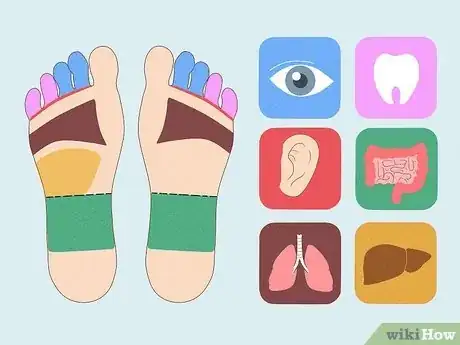



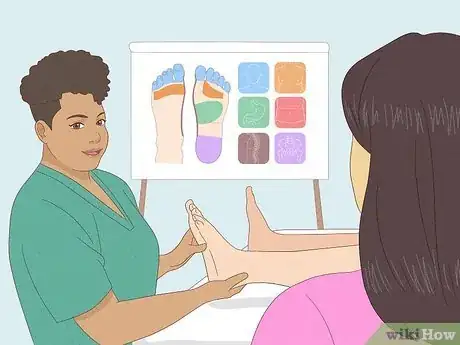
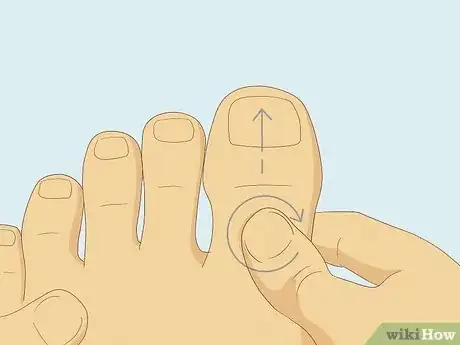



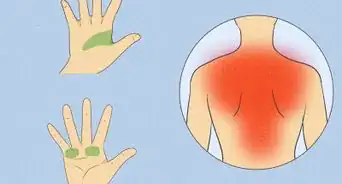
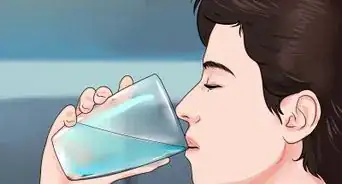
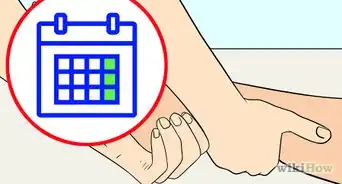

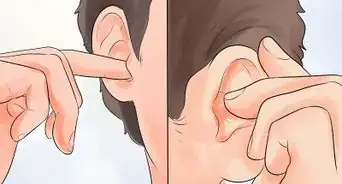
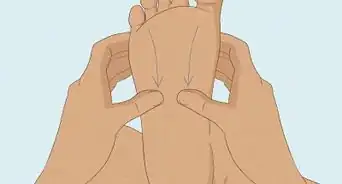
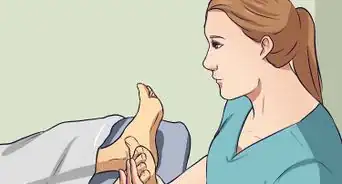
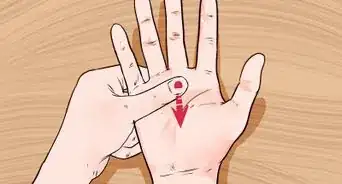
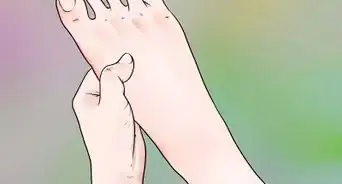
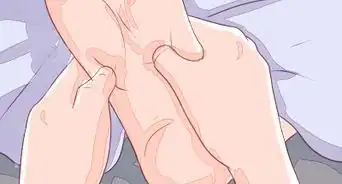
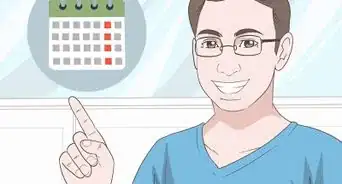










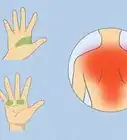

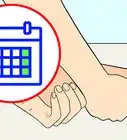





































Medical Disclaimer
The content of this article is not intended to be a substitute for professional medical advice, examination, diagnosis, or treatment. You should always contact your doctor or other qualified healthcare professional before starting, changing, or stopping any kind of health treatment.
Read More...